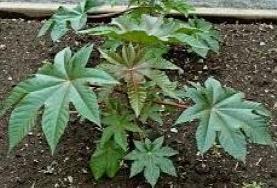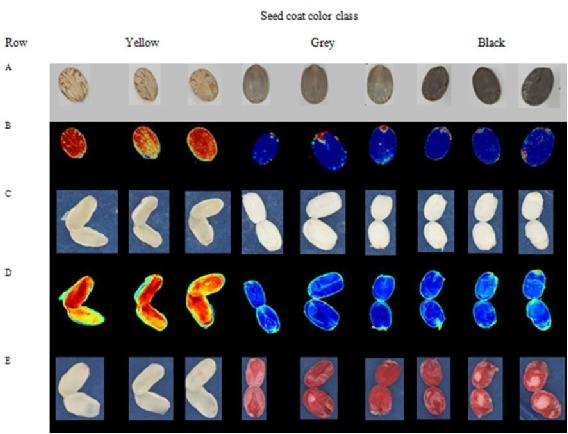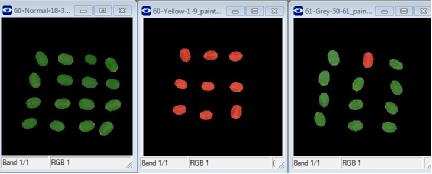品质至上,客户至上,您的满意就是我们的目标
应用案例
当前位置: 首页 > 应用案例
Multispectral image analysis in the germination laboratory
发表时间:2018-08-27 14:45:29点击:1300
来源:北京博普特科技有限公司
分享:
SpectraSeed
Innovation project with the aim of developing multispectral technology for fast, cost-efficient, and non-destructive analysis of seed quality.
AU, Videometer and Danish seed industry
Multispectral imaging
Illumination with 19 specific wavelengths (375-970 nm)
Picture at each wavelength
Identify obejct/or part of it based on their reflection spectrum
Castor Bean (Ricinus communis L.)
Visit of PhD student Pejman Nikneshan from Iran
Castor bean is a non-edible oil crop produced on 1.5 million hectares worldwide
Goal: Evaluate non-destructive analysis techniques for seed quality sorting (single seed NIR and VideometerLab)
Published: Sensor

Castor Bean (Ricinus communis L.)

Supervised model
Calibration set (120 seeds from harvest 2013)
Determine whether the spectral units can be correlated with (and predict) the viability of the individual seed.
Mark area of interest: viable seed is painted green and dead seed is painted red.
Normalized canonical discriminant analysis (nCDA) is done and a trimmed mean of
the pixel intensity values for each single seed is calculated (RegionMSImean).
The treshold value was set to zero, so negative values correlate for viable seeds and positive values correlate for dead seeds.Supervised model
Calibration set (120 seeds from harvest 2013) :
Determine whether the spectral units can be correlated with (and predict) the viability of the individual seed.
Mark area of interest: viable seed is painted green and dead seed is painted red.
Normalized canonical discriminant analysis (nCDA) is done and a trimmed mean of
the pixel intensity values for each single seed is calculated (RegionMSImean).
The treshold value was set to zero, so negative values correlate for viable seeds and positive values correlate for dead seeds.

Validation set (300 seeds from harvest 2013)
Test if the value of the spectral units actually predict viable seeds and thereby are valuable in determination of germination capacity
Conclusions/future perspectives
Reflection data from the castor seed coat are valuable in prediction of seed viability
Multispectral imaging is a good non-destructive technology for seed quality sorting of castor
bean
This study could be of interest to try on other crops, where the seeds mature sequentially and thereby obtain variation in seed coat color. E.g. Brassica species
SpectraSeed 2013-16
Purity: weed seed species in spinach samples (DanSeed 2014)
Seed health: fusarium and other fungi on barley/DNA as reference test
Seed germination: grass seed
Germination of Lolium perenne, exsperiment at AU
Seed material
Raw seed samples of the cultivar Calibra
Sorted in 5 fractions on the gravity table
Samples from fraction 3 and 4 were aged (22% MC, 45oC hot water, for 48h)
Seeds were divided into 3 groups (different caryopsis size, relative to the size of the seed unit)
with 4 x 25 seeds of each size
Images were captured at day zero and once or twice a day during germination
Seeds are marked by colours in accordance with germination (green) and non-germination
(red)。

Grass seed (Lolium perenne)
Seed segmentation and collection in a blob database
Caryopsis length and seed length are measured, and a ratio is calculated
Radicle length are measured
附:![]() 012_Merete_Halkjaer_Olesen_multispectral_image_analysis.pdf
012_Merete_Halkjaer_Olesen_multispectral_image_analysis.pdf